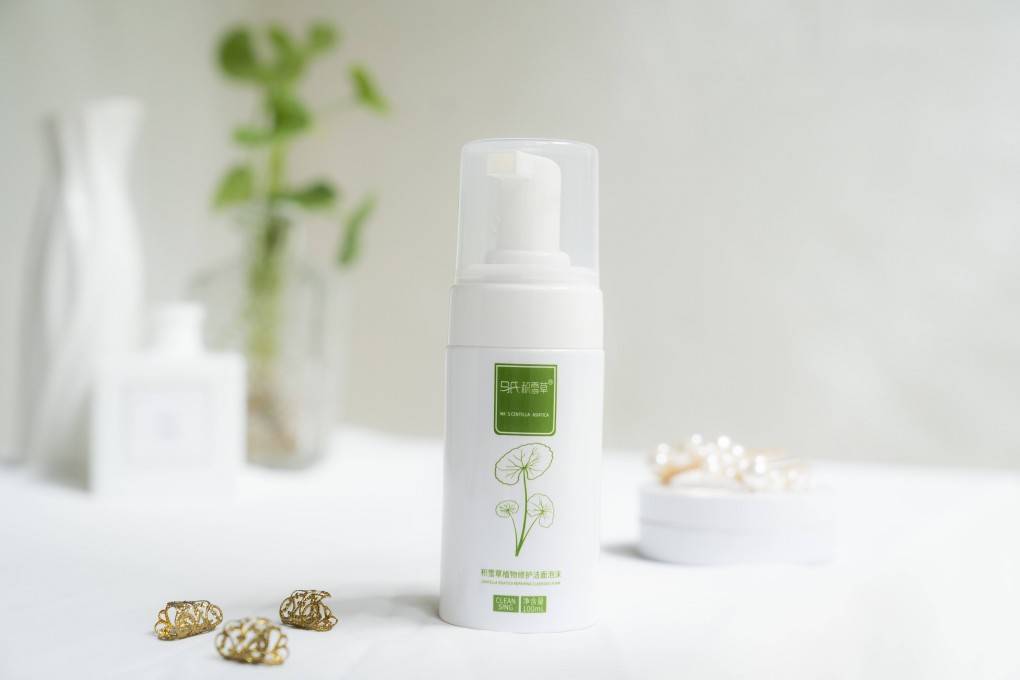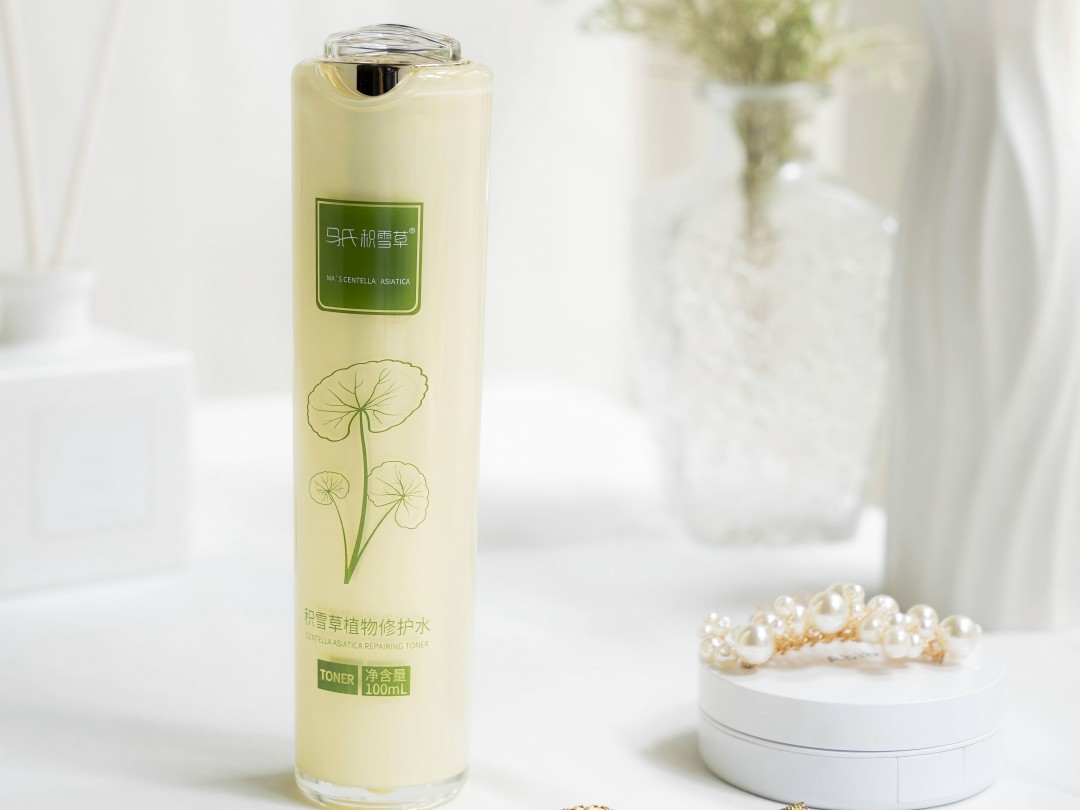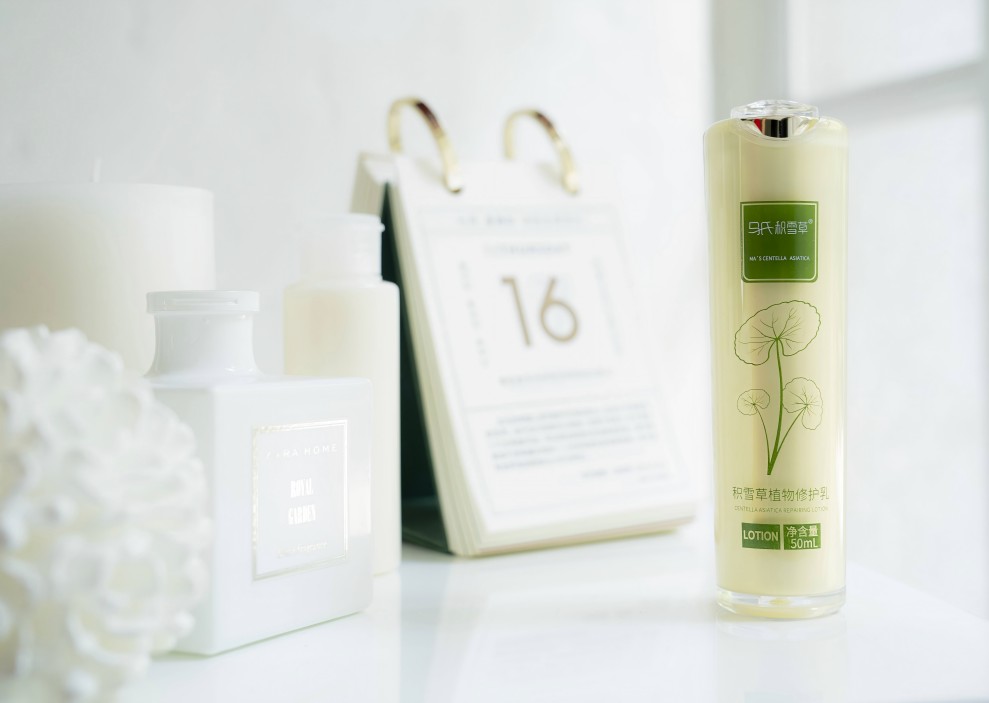Study on Skin Care Products with Centella Asiatica Extract
Centella asiatica is a perennial herb in the family Apiaceae, which is mainly distributed in Shaanxi, Jiangsu, Anhui, Zhejiang, Sichuan and other places in China. Centella asiatica is cold in nature and bitter in taste. As a traditional Chinese herbal medicine, it has the skin care effects of whitening, anti-oxidation, anti-aging, and repairing skin damage [1]. Centella asiatica is rich in a variety of bioactive substances and is a natural medicinal plant resource worth exploring and developing [2].
1 The main active ingredients of Centella asiatica extract and the extraction process
At present, scholars at home and abroad have conducted in-depth and extensive research on Centella asiatica, mainly exploring its chemical composition, pharmacological effects and active mechanisms. The results show that the main chemical components of Centella asiatica are triterpenoids, essential oils, polyacetylenes, etc., and the research has mainly focused on triterpenoids.
1.1 Triterpenoids
The chemical components of Centella asiatica extract mainly include α-amyrin-type triterpenoid acids and α-amyrin-type triterpenoid saponins. The α-amyrin-type triterpenoid acids include asiatic acid, hydroxyl asiatic acid, madecassoside and bomelitriol. α-Bisabolol-type triterpene saponins include asiaticoside, madecassoside, centelloside, isocentelloside, madecassoside, and madecassoside [3]. Studies have shown that the triterpenoids in Centella asiatica extract can promote wound healing and have the effect of eliminating scars [4].
The first research on the active ingredients of Centella asiatica extract was in 1960, when Rastogi et al. [5] isolated Asiaticoside and madecassoside from Centella asiatica and identified the structures of these two chemical components.
He Mingfang et al. [6] powdered dried Centella asiatica whole herb purchased from Guilin Medicinal Material Station, extracted it with industrial alcohol as the solvent, and then used activated carbon to decolorize and filter the extract to obtain the water-soluble and water-insoluble fractions. The water-soluble fraction was eluted with macroporous resin and repeatedly recrystallized with methanol to obtain asiaticoside. The water-insoluble fraction was sequentially extracted with petroleum ether and ethyl acetate using diatomaceous earth as the sample mixer. Finally, five compounds were identified: β-sitosterol, carotene, asiatic acid, shikimic acid and asiaticoside. Jiang Zhi-Yong et al. [7] isolated four triterpene glycosides from the ethanol extract of Centella asiatica.
Chen Yao et al. [8] used HPLC to determine the content of asiaticoside and madecassoside in Centella asiatica from nine origins, including Hainan, Guangdong, and Jiangxi. The results showed that there were differences in the content of asiaticoside and madecassoside in centella asiatica from different origins. The content of asiaticoside and madecassoside in centella asiatica collected from Tonghe, Guangdong and Wuhan, Hubei was higher than that in other regions. The common extraction methods for triterpenoids in centella asiatica are shown in Table 1.
As can be seen from Table 1, the extraction rates of the microwave-assisted ethanol extraction method, the solvent-free vacuum microwave extraction method and the acid-base method are higher than those of the other methods, indicating that these three methods are suitable for the extraction of triterpenoids. In the microwave-assisted ethanol extraction method, microwaves generate heat and pressure inside plant cells, destroying the plant cell walls and releasing the triterpenoids inside the cells. When the cell walls break, microwaves promote the release of triterpenoids from the cells [17]. In the solvent-free microwave extraction method, because stirring is carried out under vacuum and the temperature is lowered at the same time, more compounds that are prone to oxidation and cannot withstand high temperatures can be extracted, so the extraction rate is higher. In the acid-base extraction method, both the acid-heat method and the alkali-heat method can destroy the cell walls of Centella asiatica. The principle of the acid-heat method is that HCL can react with the proteins and polysaccharides on the cell wall to dissolve the cell wall. The principle of the alkali-heat method is that NaOH can soften and partially break the cell wall by dissolving the proteins on the cell wall, thereby releasing triterpenoid compounds and increasing the extraction rate.
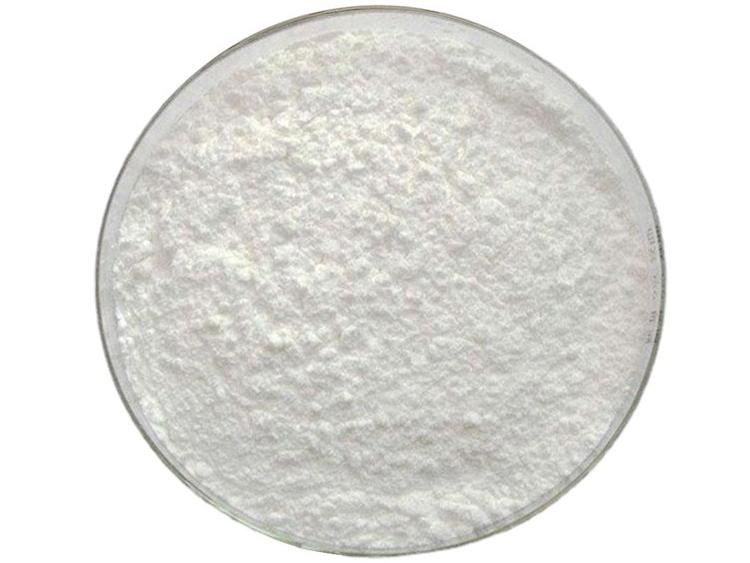
The crude extract of Centella asiatica is not highly purified. Jia Guangdao [18] used macroporous resin HPD100 to separate and purify asiaticoside and madecassoside. The HPLC chromatogram showed that the relative peak areas of asiaticoside and madecassoside were significantly increased after separation and purification by macroporous resin HPD100. Yan Yufen et al. [19] found that macroporous resin HPD100 is the best resin for the purification of asiaticoside, and determined that the optimal conditions for the purification of asiaticoside are a sample loading solution mass concentration of 0.3 g/mL, a sample loading volume of 60 mL, an elution flow rate of 2 BV/h, an ethanol elution volume fraction of 50%, and an ethanol elution volume of 4 BV. Under these conditions, the content of asiaticoside increased from 1.64% to 60.67%. In summary, macroporous resin can be used to purify asiatic triterpenoids.
1.2 Volatile oils
Umbelliferae plants include Centella asiatica, Chinese celery, carrots, coriander, dill, etc. Most of them have a fragrant aroma and a high content of volatile oils[20]. Qin L. et al. [21] determined the volatile oil in Centella asiatica according to the method of the Chinese Pharmacopoeia. 45 components were obtained by GC-MS analysis, including caryophyllene, farnesol, 3-eicosyne, elemene and longifolene, etc. The content of these components was relatively high.
Oyedeji O.A. et al. [22] performed Soxhlet extraction on dried Centella asiatica grown in South Africa to obtain a colorless essential oil with an extraction rate of 0.06%. Forty components in the essential oil were identified from the GC-MS spectrum, accounting for 99.12% of the essential oil. The characteristic of this essential oil is that it contains a high percentage of sesquiterpenes (68.80%). The main components of the sesquiterpenes are α-phellandrene (21.06%), β-caryophyllene (19.08%), bicyclo[4.1.0]hept-3-ene (11.22%), bicyclo[4.1.0]hept-3-ene B (6.29%) and bicyclo[4.1.0]hept-3-ene D (4.01%). The monoterpenes accounted for 20.20%, of which myrcene (6.55%), α-pinene (5.77%) and α-pinene (3.49%) were the main components. The content of oxidized monoterpenes and sesquiterpenes was negligible (5.45% and 3.90%, respectively).
Syed Ali RAZA[23] extracted the volatile oil components of Centella asiatica using water distillation and experimentally demonstrated that the volatile oil components of Centella asiatica have strong antioxidant capacity.

1.3 Polyacenes
So far, about 20 polyacetylene compounds have been isolated from Centella asiatica extract. As early as 1973, German scholar Schulte et al. [24] isolated 14 long-chain polyacetylene compounds from the rhizomes of Centella asiatica, and identified the structures of 5 of them. Their chemical formulas are C19H28O2, C19H27O4, C15H20O2, C17H21O3, and C19H27O3. In 1975, Bohlman et al. [25] isolated two new polyacetylenes from Centella asiatica, with molecular formulas of C19H28O3 and C17H24O3.
1.4 Other ingredients
In addition to the above main ingredients, Centella asiatica is also rich in trace elements. Wang Xuezhao et al. [26] used flame atomic absorption spectrophotometry to determine eight trace elements in Centella asiatica from seven different origins. The results showed that Centella asiatica is rich in various essential trace elements and that the trace elements contained in Centella asiatica from different origins are different.
In addition, Centella asiatica also contains racemic inositol, polysaccharides, tetraterpenes (mainly carotenoids, chlorophyll, and vanillic acid), amino acids, etc. [3].
2 Centella asiatica effects and applications in cosmetics
With the continuous development of the economy, people are also pursuing a higher quality of life, and their awareness of skin care is also constantly improving. At the same time, people are more inclined to choose natural and harmless cosmetics, so there are also a variety of products on the market that use natural plants as the main additive. Centella asiatica is a multifunctional natural plant, and its active ingredients and pharmacological properties have been studied. Some researchers [27] have proposed that centella asiatica has pharmacological effects such as whitening and promoting collagen synthesis, and its application in personal care products.
2.1 Antioxidant
Oxidation is one of the important causes of skin aging. Radiation and air pollution in the external environment can cause the human body to produce free radicals. Free radicals are active substances that lack electrons. After entering the human body, they can easily snatch electrons from cells, causing cell mutations and thus being the root cause of aging and disease in humans [28]. Zainol et al. [29] studied the antioxidant activity and total phenolic compounds of the roots, and petiole for antioxidant activity and total phenolic compounds. The results showed that both the leaves and roots of Centella asiatica had high antioxidant activity, and their antioxidant activity was comparable to that of tocopherol.
Hamid et al. [30] used a linoleic acid model system and thiobarbituric acid to experimentally evaluate the antioxidant activity of Centella asiatica root, stem and leaf extracts. The results showed that the ethanol extracts of all parts of Centella asiatica were stronger in antioxidant activity than their water extracts and petroleum ether extracts, and that the root had the highest antioxidant activity. The ethanol extracts had the best stability below 50 °C and good antioxidant activity under neutral conditions.
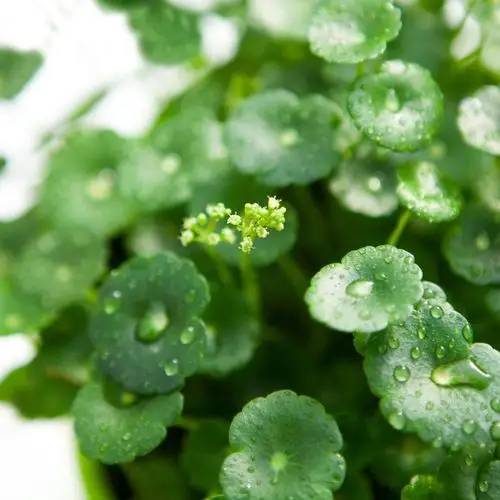
Cheng Xiaorong [31] found through an antioxidant test that there was a significant difference between Vc and Centella asiatica flavonoid extract. As the concentration increases, the scavenging rate of both Vc and Centella asiatica flavonoid extract increases, but the scavenging capacity of the flavonoid extract is significantly higher than that of Vc. Within the experimental concentration range for scavenging superoxide anion radicals, the IC50 of Centella asiatica flavonoid extract was 0.059 mg/mL, and the IC50 of Vc was 0.055 mg/mL.
Intararuchikul et al. [32] used the TBARS (thiobarbituric acid reactive substance) assay to evaluate lipid peroxidation in rat liver tissue. The TBARS level in the rotenone group was higher than that in the blank control group, indicating that rotenone caused lipid peroxidation in the rat liver. After the rats were treated with Centella asiatica extract (containing more than 80% triterpenoids), the TBARS level decreased significantly, indicating that Centella asiatica extract can protect the liver from lipid oxidation damage. Eliminating excess free radicals is beneficial to the prevention and treatment of certain diseases, such as common cancers, cataracts, cardiovascular disease, Alzheimer's disease, atherosclerosis, etc. Therefore, the development and use of natural, highly effective, non-toxic antioxidants is the future trend [33,34].
2.2 Whitening effect
The key enzyme in the synthesis of melanin is tyrosinase, which catalyzes the production of melanin and other pigments from the oxidation of tyrosine [35]. As people's living standards and aesthetic standards change, fair and clean skin is becoming more and more popular. Centella asiatica can effectively reduce melanin content and whiten the skin. Nie Yanfeng et al. [36] found in an in vitro whitening experiment that the inhibition of tyrosinase activity by 1 mg/mL of the standard products asiaticoside and asiatic acid was significant, both being higher than 90%.
Cao Liang et al. [37] removed the hair on the back of guinea pigs and then irradiated them with UVB radiation while simultaneously administering Centella asiatica cream ointment. During the administration period, the black spots on the mice in each group tended to fade, while the black spots on the untreated group remained severe. After 60 days of UVB irradiation, the area and number of melanocytes in each drug group showed a downward trend compared with the untreated group (P<0.05 or P<0.01), and the gap between the Centella asiatica soft cream group and the normal control group gradually decreased with increasing dose.
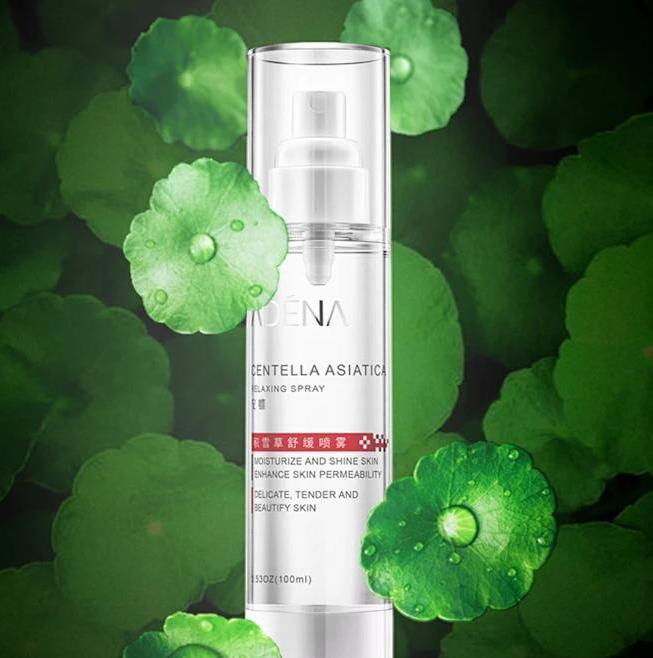
Kwon et al. [38] treated B16F10 cells with different concentrations of Centella asiatica extract. The results showed that Centella asiatica extract could reduce the melanin content in B16F10 cells, and a good dose-response relationship was observed. The main components of Centella asiatica extract (asiatin, asiatic acid and madecassic acid) were tested for their cytotoxic effects on cells using MTT, and it was concluded that asiatic acid and madecassic acid were non-toxic to cells. The effect of Centella asiatica extract on tyrosinase protein and mRNA expression was assessed, and the results showed that Centella asiatica extract can reduce melanin content by inhibiting the expression of tyrosinase protein and mRNA in B16F10 cells. This indicates that Centella asiatica extract has an inhibitory effect on melanocytes.
In the “Catalogue of Used Cosmetic Ingredient Names (2015 Edition)” issued by the China Food and Drug Administration, Centella asiatica extract has been included as a cosmetic ingredient. With people's pursuit of natural skin care products, Centella asiatica has broad market prospects in the field of cosmetics. Some Centella asiatica cosmetics and their efficacy introductions that have appeared on the domestic market are shown in Table 2.
3 Outlook
In recent years, people have gradually attached importance to the medicinal effects and mechanisms of Centella asiatica, and research on Centella asiatica is also increasing, with the content of research becoming more in-depth. The effects of Centella asiatica extracts are very extensive, and in the future, it will play its unique advantages in fields such as cosmetics. In order to make better use of the resources of Centella asiatica, we need to sort out and standardize its efficacy, combine animal experiments with clinical trials, focus on pharmacological activity testing and mechanism of action research, fully explore the medicinal value of Centella asiatica, improve the application level of Centella asiatica, and broaden the application fields of Centella asiatica extracts, so as to further guide the clinical application of Centella asiatica. In summary, future research on Centella asiatica can be carried out in the following areas: process optimization for the extraction of bioactive ingredients from Centella asiatica; application in anti-aging and whitening cosmetics and other functional cosmetics; and research on the mechanism of action in skincare.

References:
[1] Xiang Jiamie, Xiao Wei, Xu Lijia, et al. Research progress on Centella asiatica [J]. Modern Chinese Medicine, 2016, 18(2): 233-258.
[2] Xu Hao, Li Xinsheng, Wu Sanqiao. Research on the pharmacological effects of Centella asiatica. Amino Acids and Biological Resources, 2005, 27(2): 17-20.
[3] DUAN Xiaoyan, LI Hongshu, WANG Lihong, et al. Research progress of Centella asiatica and its active ingredients at home and abroad [J]. Journal of the Armed Police Medical College, 2009, 18(3): 252-255.
[4] VISWANATHAN GAYATHRI, DAN VIPIN MOHAN, RADHAKRISHNAN NEELIMA, et al. Protection of mouse brain from paracetamol-induced stress by Centella asiatica methanol extract [J]. Journal of Ethnopharmacology, 2019, 236: 474-483.
[5] SINGH B, RASTOGI R P . Chemical examination of Centella asiatica linn—III: constitution of brahmic acid [J] . Phytochemistry, 1968, 7(8): 1385-1393.
[6] He Mingfang, Meng Zhengmu, Wo Lianqun. Study on the chemical composition of Centella asiatica [J]. Journal of China Pharmaceutical University, 2000(2): 13-15.
[7] JIANG ZY, ZHANG XM, ZHOU J , et al. New Triterpenoid Glycosides from Centella asiatica [J]. Helvetica Chimica Acta, 2005, 88(2): 297-303.
[8] Chen Yao, Jiang Yi, Qin Luping, et al. RE-HPLC determination of asiaticoside and madecassoside in Centella asiatica [J]. Chinese Patent Medicine, 2000(3): 49-50.
[9] BANCHA YINGNGAM, ABHIRUJ CHIANGSOM, ADELHEID BRANTNER. Modeling and optimization of microwave- assisted extraction of pentacyclic triterpenes from Centella asiatica leaves using response surface methodology [J]. Industrial Crops & Products, 2020, 147:112231.
[10] FARHANA NAZIRA IDRIS, MASRINA MOHD NADZIR, SR ABD SHUKOR. Optimization of solvent-free microwave extraction of Centella asiatica using Taguchi method [J]. Journal of Environmental Chemical Engineering, 2020, 8(3): 103-105.
[11] Zhang Wei. Study on the extraction process and content determination of asiaticoside [J]. Journal of Luzhou Medical College, 2008(5): 498-500.
[12] Hou Wenyan. Extraction and separation of asiaticoside [D]. Xi'an: Xi'an University of Architecture and Technology, 2011.
[13] Li Tao, Zhu Huijuan. Research on the optimization of the process of extracting asiaticoside by ethanol reflux using orthogonal experiments [J]. Amino Acids and Biological Resources, 2016, 38(2): 71-74.
[14] Zhang Dandan, Nie Xiuqiang, Zhang Han, et al. Study on the process of ultrasonic-enzymatic extraction of asiaticoside from centella asiatica [J]. Chinese Pharmacy, 2017, 28(13): 1816-1819.
[15] ZHOU Kang, LIU Yanze, WANG Zhongbo, et al. Comparative study on the optimization of the flash extraction process and different extraction methods of asiaticoside [J]. Chinese Journal of Traditional Chinese Medicine, 2011, 36(23): 3265-3267.
[16] WAN-JOO KIM, JAEHOON KIM, BAMBANG VERIANSYAH, et al. Extraction of bioactive components from Centella asiatica using subcritical water [J] . The Journal of Supercritical Fluids, 2008, 48(3): 211-216.
[17] BANCHA YINGNGAM, ADELHEID BRANTNER. Boosting the essential oil yield from the rhizomes of cassumunar ginger by an eco-friendly solvent-free microwave extraction combined with central composite design [J]. Taylor & Francis, 2018, 30(6): 409-420.
[18] JIA Guangtao. Extraction, separation and purification and hydrolysis of asiaticoside [D]. Hangzhou: Zhejiang University, 2010.
[19] Yan Yufen, Chen Hongping, Chen Lin, et al. Purification process research of asiaticoside in asiaticoside [J]. Chinese Medicine and Clinical, 2018, 9(4): 12-15.
[20] ZHU Shunying. Analysis of the components of volatile oils from various plants and research on their antibacterial activity and erynginin [D]. Wuhan: Wuhan University, 2005.
[21] QIN Luping, DING Ruxian, ZHANG Weidong, et al. Analysis of the components of volatile oil from Centella asiatica and research on its antidepressant effect [J]. Journal of the Second Military Medical University, 1998, 19(2): 186-187.
[22] OA OYEDEJI, AJAFOLAYAN. Chemical composition and antibacterial activity of the essential oil of centella asiatica. Growing in South Africa [J]. Pharmaceutical Biology, 2005, 43(3): 249-252.
[23] SYED ALI RAZA, AZIZ-UR-REHMAN, AHMAD ADNAN, et al. Comparison of antioxidant activity of essential oil of Centella asiatica and Butylated hydroxyanisole in sunflower oil at ambient conditions [J]. University of Oradea, 2009, 3(1): 1-4.
[24] SCHULTE K E, RUECKER G, BARYEA. Polyacetylenes from HydrocotyLeasiatica [J]. Arch Pharm, 1973, 306(3): 197-209.
[25] Zhao Yuxin, Li Manling, Feng Weihong, et al. Research progress on Centella asiatica [J]. Chinese Journal of Traditional Chinese Medicine Information, 2002(8): 81-84.
[26] Wang Xuezhao, Yu Yanling, Chen Yao, et al. Comparative study of trace elements in Centella asiatica from different origins [J]. Guangdong Trace Element Science, 2000(1): 41-43.
[27] YAN Mingqiang, REN Juan. Application of Centella asiatica extract in personal care products [J]. Perfume, Essence and Cosmetics, 2009(6): 44-46.
[28] LIN Baoyu. A brief discussion on the harm of free radicals to the human body and methods of removal [J]. Western China Science and Technology, 2007(18): 37, 48.
[29] ZAINOL M K, ABD-HAMID A, YUSOF S, et al. Antioxidative activity and total phenolic compounds of leaf, root and petiole of four accessions of Centella asiatica (L.) Urban [J]. Food Chemistry, 2003, 81(4): 575-581.
[30] HAMIDA A, SHAH Z M, MUSE R, et al. Characterisation of antioxidative activities of various extracts of Centella asiatica (L) Urban [J]. Food Chemistry, 2002, 77(4): 465-469.
[31] CHENG Xiaorong. Study on the extraction and purification of total flavonoids from Centella asiatica and their antioxidant activity [D]. Jinzhou: Liaoning Medical College, 2011.
[32] INTARARUCHIKUL THIDARAT, TEERAPATTARA- KAN NARUDOL, RODSIRI RATCHANEE, et al. Effects of Centella asiatica extract on antioxidant status and liver metabolome of rotenone-treated rats using GC-MS [J]. Biomedical chromatography: BMC, 2019, 33(2): e4395.
[33] NIJVELDT R J, VAN NOOD E L S, VAN HOORM D E, et al. Flavonoids: A review of probable mechanisms of action and potential applications [J]. The American Journal of Clinical Nutrition, 2001, 74(4): 418-425.
[34] LIU Xiaoda. Research on the activity and mechanism of resveratrol and its analogues in scavenging galvinoxyl free radicals [D]. Lanzhou: Lanzhou University, 2009.
[35] LEE H, CHA H J. PORIA COCOS Wolf extracts represses pigmentation in vitro and in vivo [J]. Cellular and Molecular Biology, 2018, 64(5): 80-84.
[36] Nie Yanfeng. Preparation of Centella asiatica extract and its application in cosmetics [D]. Guangzhou: Jinan University, 2017.
[37] Cao Liang, Dai Yue, Chen Xiechun, et al. Effect of asiaticoside cream ointment on pigmentation of guinea pig skin [J]. World Clinical Drugs, 2007(9): 526-531.
[38] KWON KJ, BAE S, KIM K, et al. Asiaticoside, a component of Centella asiatica, inhibits melanogenesis in B16F10 mouse melanoma [J]. Molecular Medicine Reports, 2014, 10(1): 503-507.


 English
English French
French Spanish
Spanish Russian
Russian Korean
Korean Japanese
Japanese